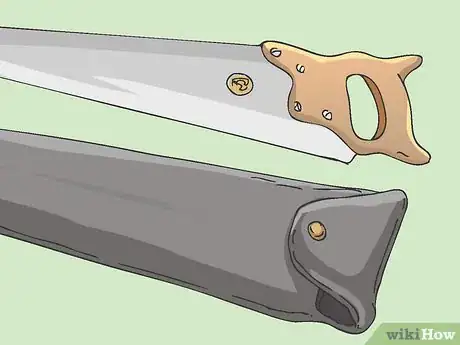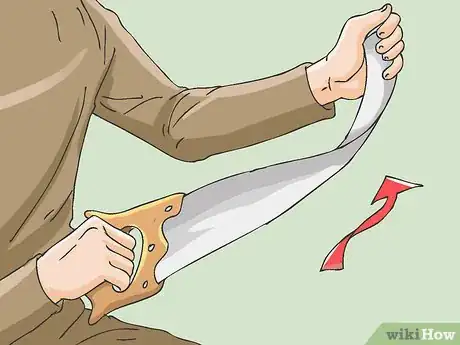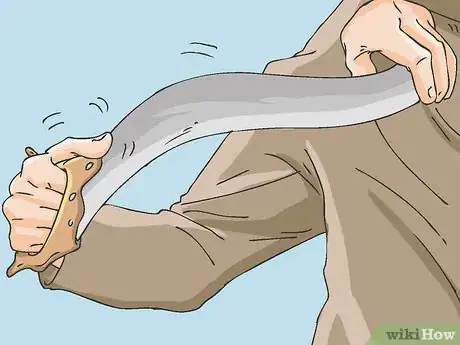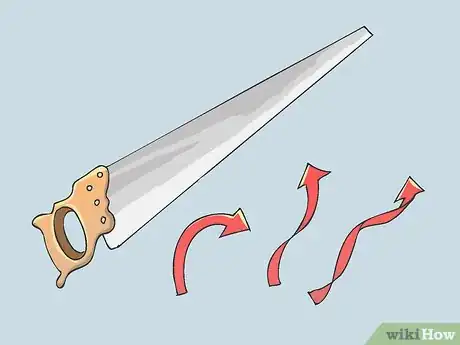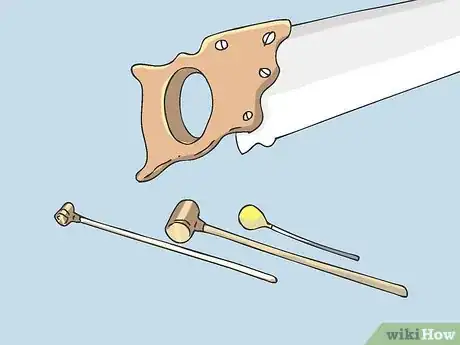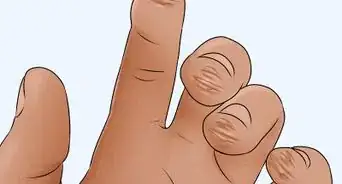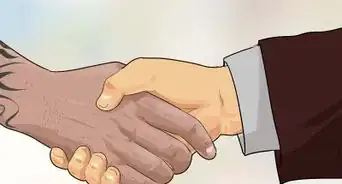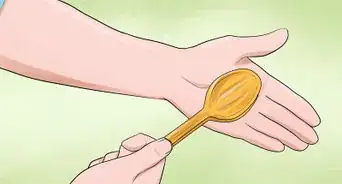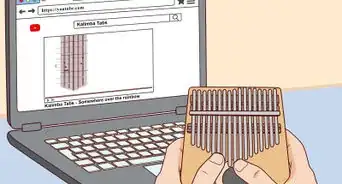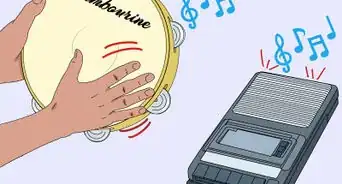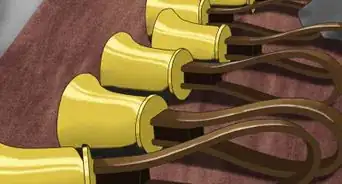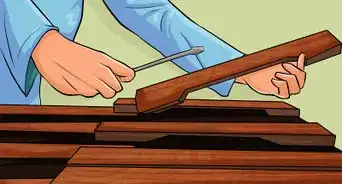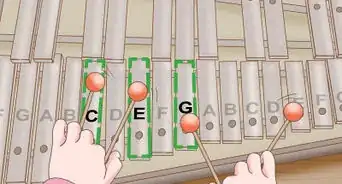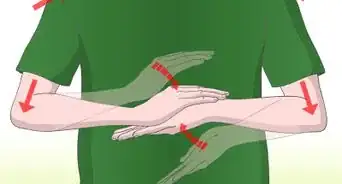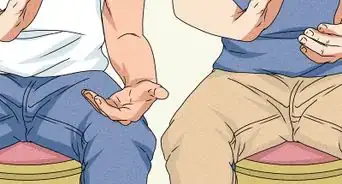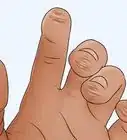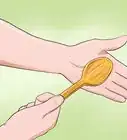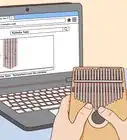X
wikiHow is a “wiki,” similar to Wikipedia, which means that many of our articles are co-written by multiple authors. To create this article, 22 people, some anonymous, worked to edit and improve it over time.
This article has been viewed 94,661 times.
Learn more...
Playing a saw was a common way to make music in days gone by, just as were washboards, jugs, and washtub bases. For those interested in trying their hand at this unique musical endeavor, here are the steps.
Steps
-
1Purchase a high quality handsaw. Here, you won't have to worry about TPI (teeth per inch), just the length and the temper (metallurgical for hardness) of the blade, and the size of the handle. Old timers used quality saws in their craft, since there were no miter saws, etc. A Disston D23 is a good example, but even they don't seem to be the quality they once were.
- It is not likely the manufacturer would admit it, but the metal in modern handsaws does not seem to work well with this technique. You may be better off shopping flea markets or yard sales for cast off, worn out saws of yesteryear. The condition of the teeth, or even missing teeth on an old saw should not affect its playability.
-
2Bend your saw. You do this by grasping the handle in the palm of one hand, the end of the blade in the palm of the other, and flexing it in a wave-like or undulating motion down the length of the blade. Once you mastered the wrist movement that this step requires, you should hear a tone from the vibration in the metal.
- Practice making the "wave" in the metal of the saw blade travel from one end (usually the tip of the blade), to the other in a controlled, fluid motion.
Advertisement -
3Work the blade of the saw in the waving motion while you thumb. To thumb means to either rub or strum the metal blade near the handle with the thumb of the hand which is holding it. The pressure from your thumb, either simply pushing (which dampens the vibration), or "strumming" by drumming on the blade will change the tone, creating effects in the sound the saw makes.
-
4Work a twisting motion into the blade as you progress in your ability to modify the sounds created by the bending, strumming, and dampening process. This can raise or lower the pitch of the basic tone of the metal when it is "sprung" in the waving motion between your hands.
-
5Develop your own sound as you become skilled. There is no exact "recipe" for producing perfect pitch or creating certain notes, even if there were, there is little you can do to "tune" this simple instrument, and no two are likely to be exactly the same.
-
6Build a "bow". When you have learned the technique of creating sound from the metal of your saw, you may choose to build a bow, similar to a violin bow, to use the produce the full range of sounds your "instrument" is capable of.
- Drill two small holes in a flexible wooden "yardstick", or other thin, flexible piece of wood.
- Tie the of a length of Dacron or other fishing line or other strong, thin, thread through the hole at one end, then pull it tightly enough through the hole on the other end to bend the yardstick in a bow shape. Continue winding this line around the ends of the bow, until you have at least 30 or 40 wraps laid in. Your bow "string" should lay flat, and each line should be tight and lay in as closely to the others as possible. You may use hot melt glue or some other glue to fasten the strings permanently when you are finished wrapping them.
- Wax or use rosin to coat your bow string.
-
7Play the saw with your bow. Lay the handle of the saw in your lap, while sitting up in a straight-backed chair, and grasp the tip with your left hand. Bow the saw blade as you did in the early steps to produce your desired pitch or tone. Draw the bow across the smooth side, or back, of the saw blade. Differences in the amount of tension you create in the metal, and the amount of bow in it, will produce different sounds, so experiment.
-
8Use a "striker", or "hammer" to play your saw. This technique can be used by building a "hammer", similar to a drumstick. You may find a drumstick, or small diameter wooden dowel, and "tap" the sawblade with it to produce sound. A soft "head" can be made by either by wrapping the end of your stick with twine or even rubber bands to form small balls on it to use as a striker. Tapping the saw on different portions of the blade while changing the "bow" of the blade will produce different notes.
Advertisement
Community Q&A
-
QuestionWhat bow should I use, and is violin rosin the best thing?
 731mns15Community AnswerA violin bow is the same as a viola and cello bow. Rosin is needed when playing any stringed instrument; it makes the bow hairs sticky, creating sound vibration on each string. If you don't have any rosin on your bow, it will make no sound on the string. You can use ten swipes on a bow. It can wear off in anywhere from a few days to a month, depending how often you play and how much pressure you put on it.
731mns15Community AnswerA violin bow is the same as a viola and cello bow. Rosin is needed when playing any stringed instrument; it makes the bow hairs sticky, creating sound vibration on each string. If you don't have any rosin on your bow, it will make no sound on the string. You can use ten swipes on a bow. It can wear off in anywhere from a few days to a month, depending how often you play and how much pressure you put on it.
Advertisement
Warnings
- Dogs seem particularly annoyed by some of the frequencies generated by playing a saw.⧼thumbs_response⧽
- It is unlikely, but possible that an old saw may have stress cracks and could split or shatter when compressing the metal.⧼thumbs_response⧽
- Be Careful of the teeth on the saw so you don't cut your self.⧼thumbs_response⧽
Advertisement
Things You'll Need
- A well-tempered old fashioned handsaw
About This Article
Advertisement
